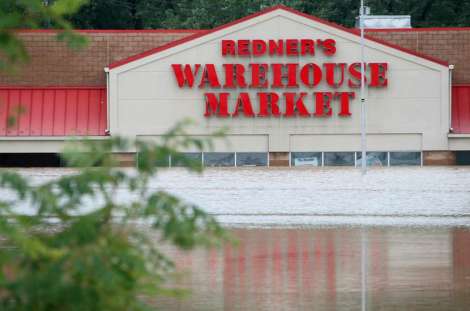AG’s Action Compels Feds to Protect Public Health
WATKINS GLEN, NY – A lawsuit by New York Attorney General Eric T. Schneiderman toforce the federal government to conduct a full environmental impact study of natural gasdrilling is a recognition of the considerable risks posed by hydraulic fracking, say membersof the grassroots Coalition to Protect New York.
“It’s regrettable that our attorney general has to go to court to force the federal governmentto do what it’s required to do under current law – protect the health and safety of itscitizens,” said Jack Ossont, spokesman for CPNY, which opposes the destructive process offracking. “We have no doubt that any rational, independent analysis of fracking will clearlyshow that the dangers far outweigh any short-term economic gains, which will benefit onlya very few anyway.”
Yesterday, Schneiderman filed a lawsuit against the federal government for its failure tocommit to a full environmental review of proposed regulations that would allow drillingfor shale gas – including the harmful technique known as fracking – in the Delaware RiverBasin.
The National Environmental Policy Act requires federal agencies to conduct a full reviewof actions that may cause significant environmental impacts. But, ignoring this law, theDelaware River Basin Commission– with the approval of its supporting federal agenciesincluding the US Army Corps of Engineers and the Environmental Protection Agency –proposed regulations allowing gas development in the Basin without undertaking any suchreview.
The proposed regulations allow high-volume hydraulic fracturing combined withhorizontal drilling (fracking) within the Basin. Fracking has been proven to pose graverisks to the environment, health, and communities. It involves the withdrawal of largevolumes of water from creeks and streams, frequent contamination of drinking watersupplies, the generation of millions of gallons of toxic waste that has to go somewhere,increased noise, dust and air pollution, and potential harms to community infrastructureand character from increased industrial activity.
“We want to thank the attorney general and all the groups involved in this matter, for pushing for an environmental impact study on fracking that should have beendone long ago,” said Ossont.
Kevin Bunger, a member of CPNY, said the attorney general’s lawsuit should allow for a full,independent, peer-reviewed study of the impacts of fracking.
“It’s irresponsible that we’ve allowed fracking to take place throughout the Northeastwithout any non-industry-funded, comprehensive analysis of its impacts on theenvironment and human health,” he said. “Of course, it hasn’t been done because a multi-state, multi-institutional, large-scale study would prove what we already know from avast array of evidence: that fracking contaminates drinking water and leads to wide-scale,probably irreversible pollution.”
CPNY members’ awareness of the destructive effects of fracking is also behind the group’sopposition to a landmark water withdrawal bill (S3798) now under consideration inthe state senate that would give away billions of gallons of New York’s waters to largeindustrial users, including the methane gas industry which requires vast amounts of waterfor its fracking operations. The assembly has already passed its version of the bill.
“There is considerable pressure on our elected officials to open our state to widespread,unregulated fracking,” said Ossont. “It’s up to the citizens of New York to tell our senatorsand representatives to do the right thing: stop and consider all the impacts. We’re beingtold that the methane gas beneath our feet presents a golden opportunity for our state andour country. But it’s fool’s gold. Fracking would ruin our environment and literally destroyour way of life.”
Contact: Jack Ossont, Coalition to Protect New York, (607) 243-7262




